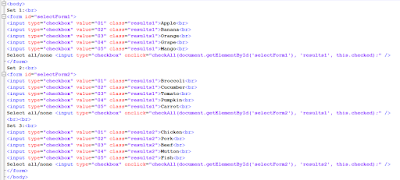Car battery is a consumable product that will eventually fail over time. When we say a better car battery, the most important point is that it can last longer and degrade slower.
Below are some of the criteria to look for in selecting a better car battery.
1. Brand
The lifespan of battery is affected by high temperature. Certain brand of battery is manufactured for use in hot equatorial areas, such as Amaron, Exide, etc.
2. Size
The battery for normal passenger car is normally of NS40, NS60 or NS70. NS60 is more powerful than NS40, and NS70 is more powerful than NS60.
However, choosing the right size of battery that match with your car's alternator is important. If you car's alternator is generating smaller current and designed to work with NS40 type of battery, it is better for you to stick to NS40 or at most upgrade to NS60 but not beyond.
This is because if the charge supplied from alternator is not sufficient to make the battery fully charged, the battery will suffer premature death and therefore has a shorter life span.
In addition, bigger battery will cause heavier workload to the alternator, which might also reduce the life span of the alternator.
Regardless of the size of the battery, if the charging system is unstable, the battery will die fast.
3. Performance Rating
A battery number looks like this: 46B24L
The first 2 digit is its overall performance rating. The higher the better.
The alphabet after the first 2 digit is an indicator of the battery's width and height. This alphabet can be from A to H. Smaller alphabet indicates smaller width and height.
The number after the alphabet is its length in centimeter. For the battery number 46B24L, its length is 24cm.
The final alphabet indicates the position of its positive terminal. L means it is on the left, and R means it is on the right.
4. Amp Hour (AH)
Amp Hour is an indicator of how much energy is stored in a battery.
It is the energy a 12 volts battery can deliver continuously for 20 hours (C20) at 80°F (26.7°C) without falling below 10.5 volts.
The state when the battery's energy fall below 1.75 volts per cell (or 10.5 volts in a 6-cells 12 volts battery) is considered as "fully discharged".
There are several C-rating given to the batteries in relation to its AH, by giving the battery a specific load to discharge:
- C3 means the battery will be fully discharged over a period of 3 hours.
- C5 means the battery will be fully discharged over a period of 5 hours.
- C8 means the battery will be fully discharged over a period of 8 hours.
- C10 means the battery will be fully discharged over a period of 10 hours.
- C20 means the battery will be fully discharged over a period of 20 hours.
- C100 means the battery will be fully discharged over a period of 100 hours.
In normal practice, C20 is used to measure the AH of vehicle batteries.
The AH value among batteries with same size varies, and you should look for the one with higher AH value.
5. Reserve Capacity (RC)
RC is a general indicator of how long a fully charged new battery can continue to operate the vehicle's essential accessories when the alternator or fan belt fails.
It identifies how many minutes the battery can deliver a constant current of 25 amps at 80°F (26.7°C) without falling below the minimum voltage of 1.75 volts per cell in order to keep the vehicle running.
The higher the RC rating, the longer your vehicle can operate in the event your alternator or fan belt is faulty.
6. Cold Cranking Amps (CCA)
CCA is a rating used to define the battery's ability to start an engine in cold temperatures. It refers to the number of amps a 12-volt battery can deliver at 0°F (-17.8°C) for 30 seconds while maintaining a voltage of at least 7.2 volts.
The higher the CCA rating, the greater the starting power of the battery.
Battery starting power deteriorates as the battery ages. Therefore, a battery with higher starting power should give you more confidence over time.
Replacing a battery with one that has a lower CCA than the original may result in poor performance.
7. Price
Normally, the branded battery that suit with your car's alternator, with high performance rating, high AH, high RC and high CCA, will also come with a high price tag.
As such, you might want to strike a balance between the battery's price and its performance. Choose the above average battery, and it can probably last for at least 2 years.






